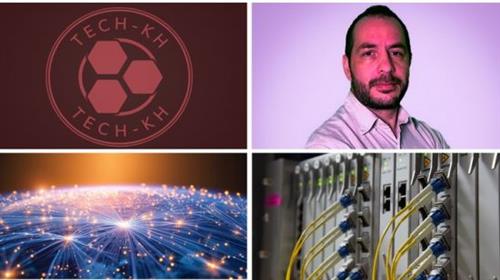
Free Download FTTx FTTH networks and PON technology – all for beginners
Published 7/2024
MP4 | Video: h264, 1280x720 | Audio: AAC, 44.1 KHz, 2 Ch
Language: English | Duration: 2h 14m | Size: 983 MB
FTTX / FTTH / GPON / Fiber to the home / Fiber Optic / Fibre / Internet / 3Play / Network / PON / ODN / OSS OSP
What you'll learn
How an optical transmission network works.
The different models of FTTx networks, concepts and recommendations for the best design.
Historical and new generation PON technologies.
How a PON network works, protocols, packages and service model.
FTTx network interoperability.
Materials science in optical networks.
Requirements
No prerequisite is necessary.
Description
COURSE OBJECTIVE:This course is configured for people with or without previous experience in FTTx networks, no prior knowledge is necessary since in the theoretical modules all the operation and components for these networks are explained from a didactic point of view.The course aims to train new network technicians and engineers or to improve and update the different network models, new technologies and how to make our ODN scalable for the different PON families and for all services.The different models of FTTX networks (FTTX – FTTB – FTTC – FTTN) will be shown, and the entire PON family including the latest technologies in the approval stage.MODULE 1 - INTRODUCTION:· Optical Theory:It explains how concepts and discoveries of Light were born. WDM technologies are detailed and explainedLight and wavelength.The electromagnetic spectrum and infrared light.Concepts and characteristics of WDM, CWDM and DWDM.Optical Attenuation.Splitters.· Theory of optical transmission:Explains how optical transmission worksFundamentals of signal digitization.How optical transmission works.Optical Transmission Media, Fiber Optic.Chromatic dispersion.· We know the Materials:The materials and elements involved in optical links are presented and described.Optical fibre wires.Arc fusion splicer.Mechanical splices.Connectors and couplers.MODULE 2 - PASSIVE FTTX NETWORKS:· Knowing FTTx networks:The different FTTx networks and balanced and unbalanced splitter models are detailed, including all possible ODN protections.FTTx family (FTTH, FTTB, FTTC, FTTN).FTTx network structure.FTTx networks with Balanced splitter.FTTx networks with unbalanced splitter.Protected FTTx networks (1:1 and 1+1) Partial and complete protection.ODN Components.· PON technology:We know PON technology, how it transmits and how it labels and links services in the point multipoint network.History of Technology until the current 50G-PON..PON technology communication method.How TDM and TDMA work.GEM encapsulation protocol.PON frame structure.Service configuration model over PON.Analysis of capacities and concurrencies.Interoperability and coexistence.· HFC versus FTTH:Complete detail of advantages and disadvantages of both networks, design, construction, maintenance and growth.Advantages and disadvantages of HFC and FTTH Design.Advantages and disadvantages of HFC and FTTH Deployment and Growth.Advantages and disadvantages of Maintenance in HFC and FTTH networks.MODULE 3 - INTRODUCTION TO FTTX DESIGN:· FTTx network model:The parameters that will define our network model are detailed and explained according to the area to be built.Type of Network (underground, aerial or hybrid).Type of services.Depending on the density of the region.Type of FTTx Network to use (FTTH, FTTB, FTTC, FTTN).Network Penetration (Total or Deferred).Growth Plan.HUB Technology (OLT, PON Capacity and Split Ratio).· Network Topologies:We analyze all possible FTTx network topologiesBalanced and Unbalanced network topology.Calculation of links in both networks.Topologies for residential services.Topologies with MDUs.Topology including corporate services.· Delayed network penetration:Detail of the different deployment and design models with partial penetration, deployment design and 100% growth.· MDUs:Detail of how the connection and internal distribution of these sites is carried out.Building design models.Complex design model.· Considerations of Aerial networks:The importance of surveying and recognizing obstacles to generate a real designObstructions of Electrical elements - Electrical Network.Other obstructions to the pass of cables, posters, roofs and balconies.Avenues, Roads and Routes or Highways, definition of intersections and natural limits of the network.Distance between support posts.Specific case of over-dated wiring (Example Salta/Capital/Argentina).
Who this course is for
To any student who wants to know in detail how an FTTx/FTTH PON network behaves and is modeled.
Commercial or non-technical worker who want to know how these networks work
Homepage
https://www.udemy.com/course/fttxftth-networks-and-gpon-technology-all-for-beginners/